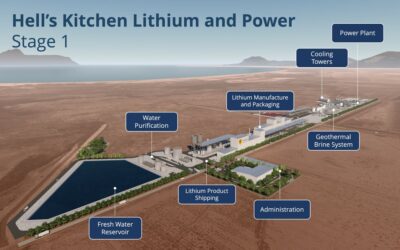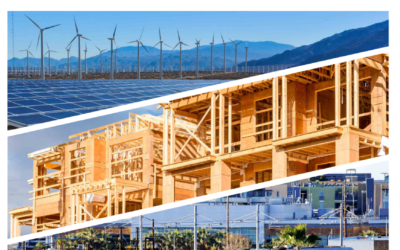The Bureau of Land Management on June 2 issued a Notice to Proceed with construction for the Sunlight Storage II Battery Energy Storage System project in Riverside County, increasing energy storage for the Desert Sunlight Solar Farm. Once completed, the project will provide up to 300 megawatts of additional renewable energy storage capacity, boosting reliability for the state power grid. The project advances the Biden-Harris administration’s efforts to develop clean energy on public lands and to achieve nationwide carbon-free electricity by 2035.
“The Sunlight Storage II Battery Energy Storage System project will increase reliability for the State power grid, while expanding access to clean energy for Californians,” said California Desert District Manager Shelly Lynch. “Clean and reliable renewable energy projects like this one will continue to help us address climate change and reduce greenhouse gas emissions.”
The project, which would sit entirely within the existing fence line of the Desert Sunlight Solar Farm, would increase the project’s total storage capacity to 530 megawatts once completed. The Desert Sunlight Solar facilities currently generate 550 MW of solar electricity and have 230 MW of energy storage capacity in operation. The Sunlight Storage II project is being developed by Sunlight Storage II LLC a wholly owned subsidiary of NextEra Energy Resources LLC.
In 2021, the BLM approved construction of the Desert Sunlight Battery Energy Storage System within the Desert Sunlight Solar facilities, both of which are now fully operational. The Desert Sunlight Solar Farm is located approximately six miles north of Desert Center. It uses approximately 8.8 million cadmium telluride modules made by the US thin-film manufacturer First Solar.
All Desert Sunlight Solar facilities, including the newly-approved Sunlight Storage II Battery Energy Storage System, are in an area analyzed and identified as suitable for renewable energy development as part of BLM’s Desert Renewable Energy Conservation Plan, a landscape-level plan focused on 10.8 million acres of public lands in the desert regions of seven California counties that streamlines renewable energy development, while conserving unique and valuable desert ecosystems and providing outdoor recreation opportunities. To approve these sites for renewable energy projects, the Department of the Interior and the BLM work with Tribal governments, local communities, state regulators, industry, and other federal agencies.
The BLM manages vast stretches of public lands that have the potential to make significant contributions to the nation’s renewable energy portfolio. To promote the development of these energy sources, the BLM provides sites for environmentally sound development of renewable energy on public lands. The efficient deployment of renewable energy from our nation’s public lands is crucial in achieving the Biden-Harris administration’s goal of a carbon pollution-free power sector by 2035, as well as Congress’ direction in the Energy Act of 2020 to permit 25 gigawatts of solar, wind, and geothermal production on public lands no later than 2025.




